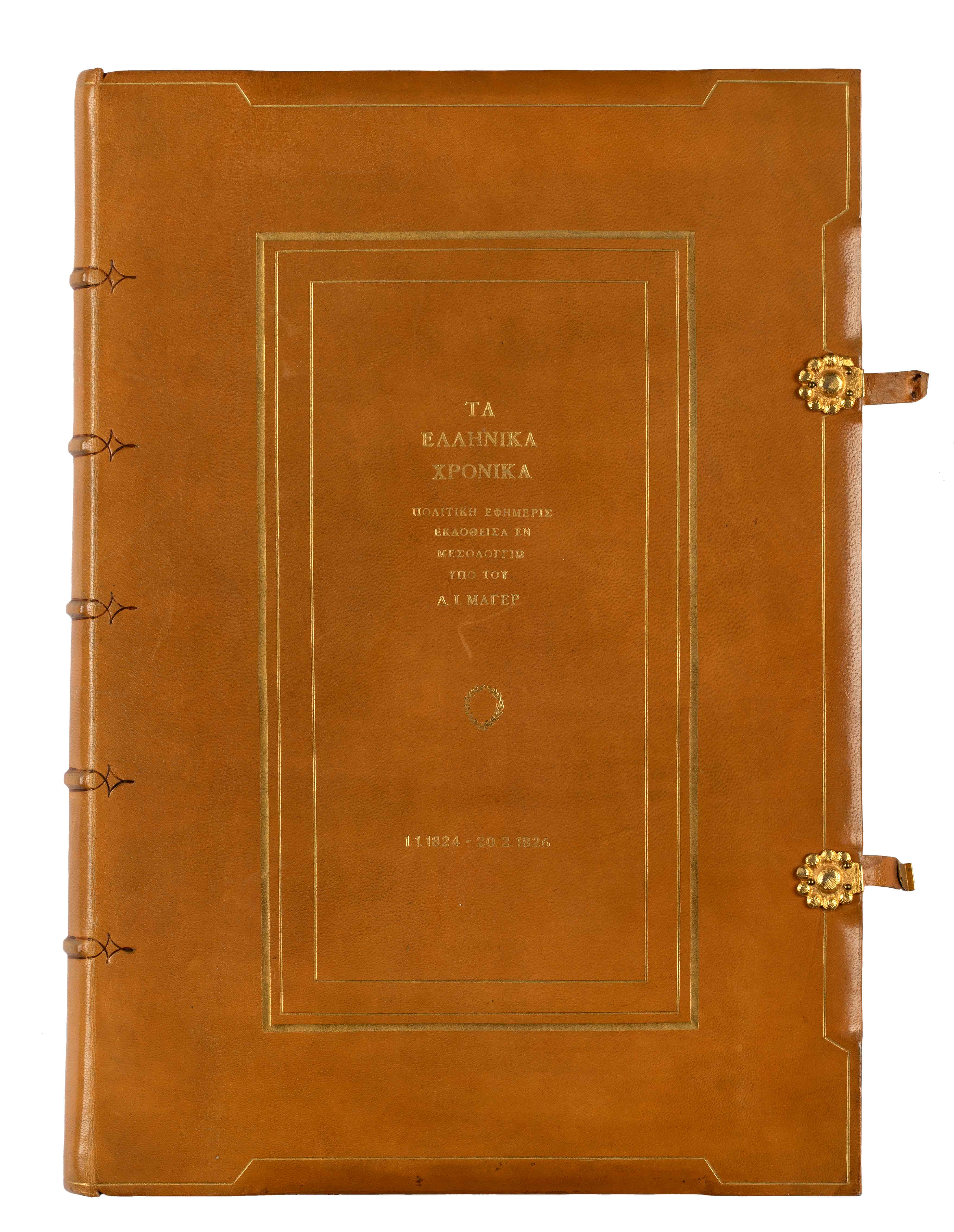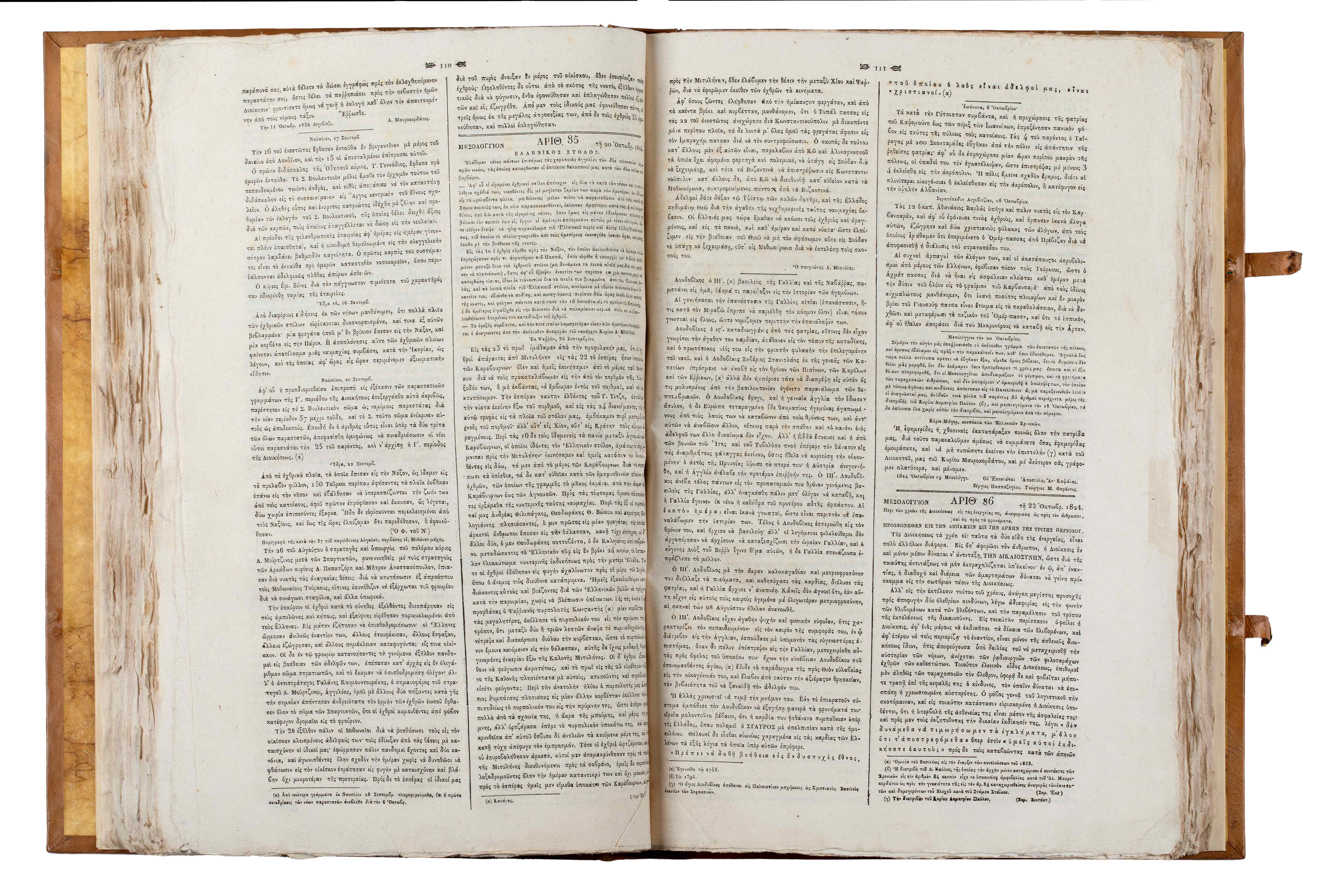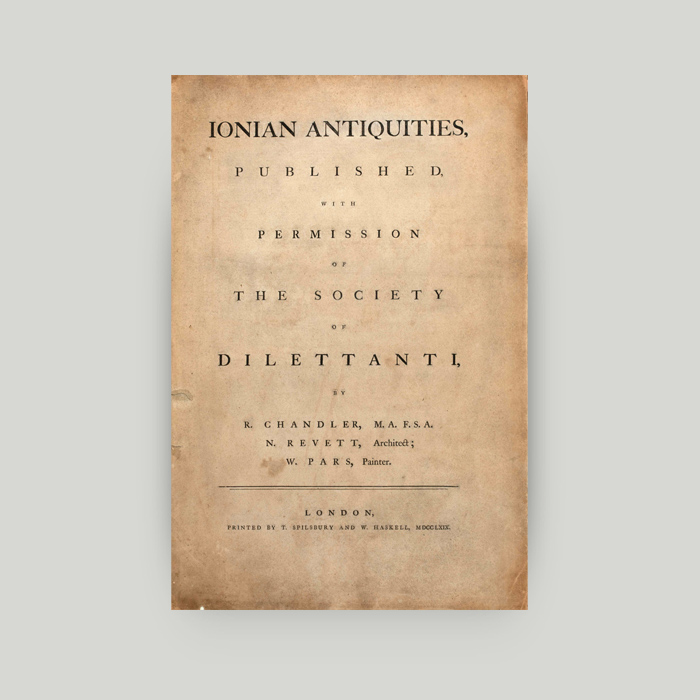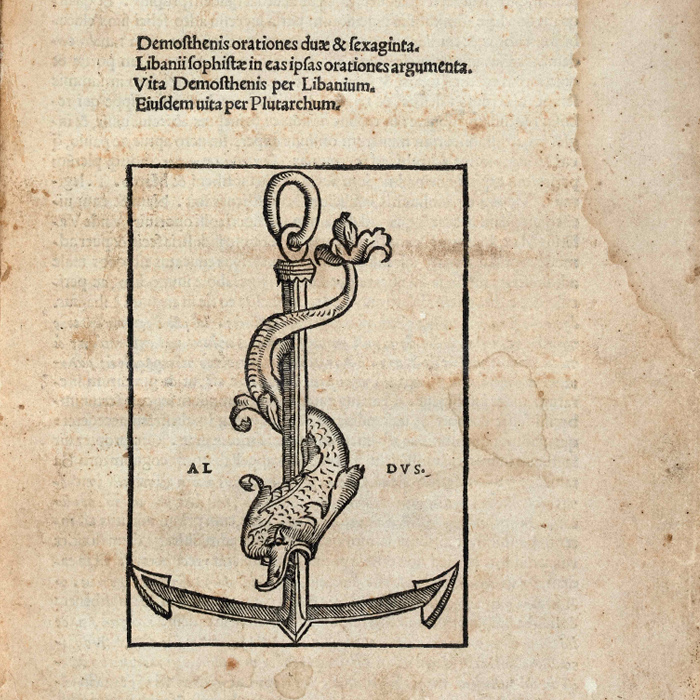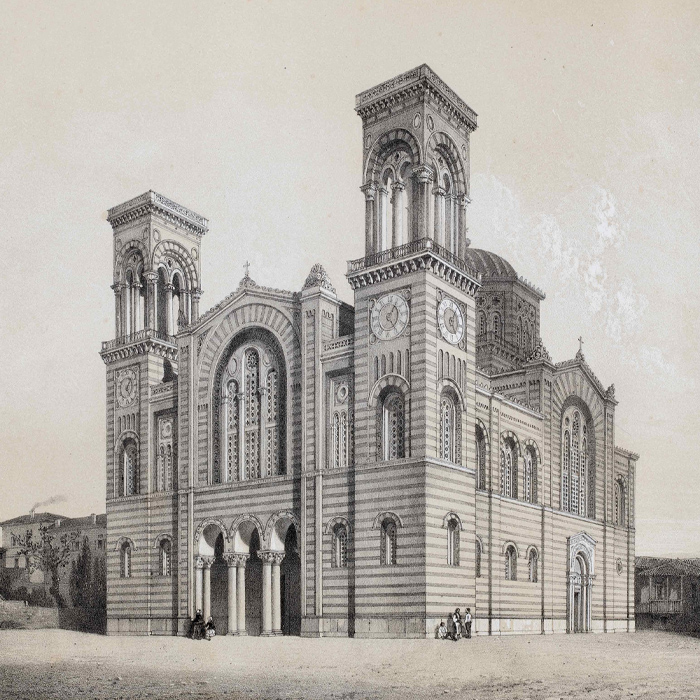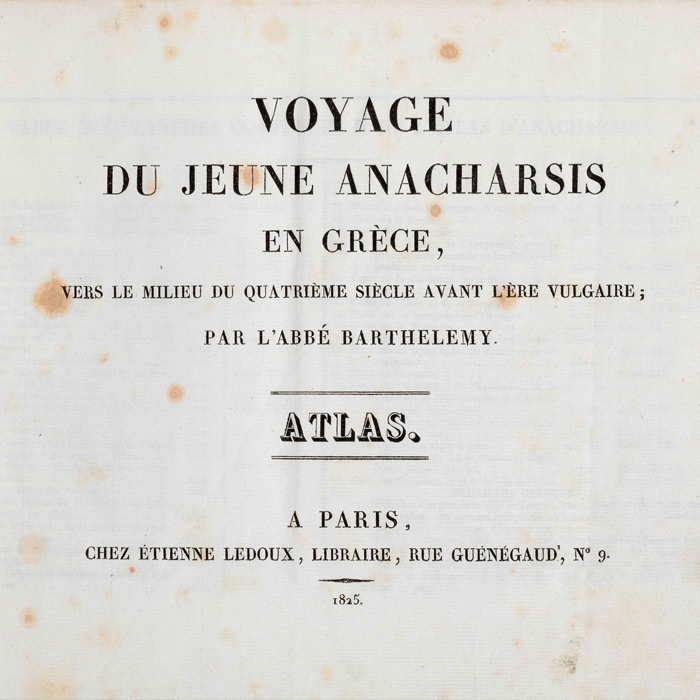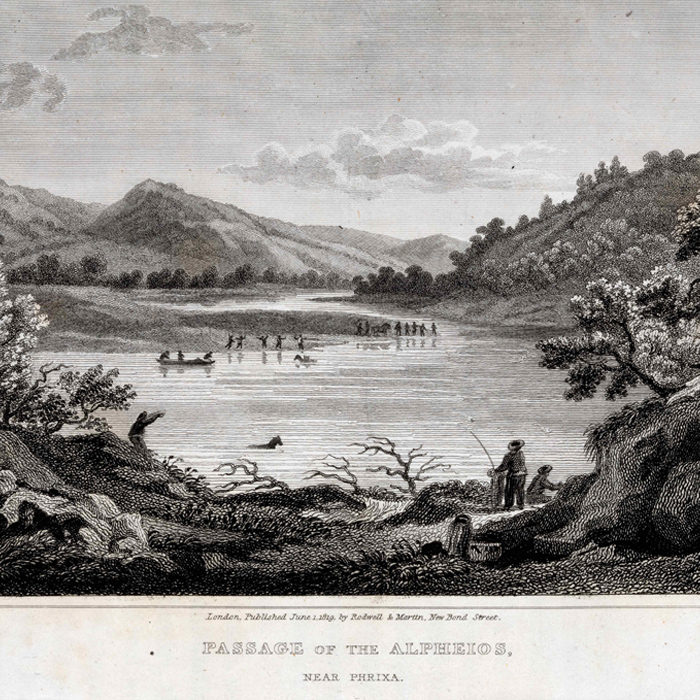Ellinika Chronika. Political Newspaper
The volume Ellinika Chronika. Political Newspaper published in Messolonghi 1.1.1824-20.2.1826 includes every issue of the same-titled newspaper. Its publisher, Swiss doctor Johann Jakob Meyer, published war reports, articles, translations of articles from foreign newspapers and literary articles. At the same time, the newspaper served as a semi-official instrument of the revolutionary administration. Its issues compose a valuable historic volume.
External appearance
The book Ellinika Chronika. Political Newspaper published in Messolonghi 1.1.1824-20.2.1826 is 29 cm (width) x 41 cm (height). It comprises 144 pages.
It has a brown leather cover, with decorative clasps.
The 1st page of the book features a dedication by the publisher to the Duchess of Plaisance.
A political newspaper in 1 volume
The volume holds every issue of the political newspaper Ellinika Chronika (Greek Chronicles), which circulated during the Greek Revolution.
The newspaper had 4 pages. However, sometimes its size increased to 5 or 6 pages due to the large volume of contents.
The Ellinika Chronika newspaper is one of the most important pieces of printed evidence documenting the Greek Revolution. It served as a semi-official instrument for the Administrations that were formed by the Greeks during the War of Independence.
Ellinika Chronika: A historic newspaper
Ellinika Chronika was published by Swiss Philhellene Johann Jakob Meyer. Its 1st issue circulated on New Year’s Day 1824, and its last on 20 February 1826. It was published twice weekly, usually on Wednesdays and Saturdays.
The newspaper circulated during a heroic time for the revolution in Central Greece. The newspaper is also a valuable historical source for the Siege of Messolonghi by the troops of Reşid Mehmed Pasha (Kütah) and Ibrahim Pasha.
Publications and printing companies
The newspaper was originally printed with a small, manual press in Messolonghi, by the printing company of Dimitrios Mestheneos. From 20 April 1824 Ellinika Chronika was printed using a more modern manual press. It was brought to Greece by English Colonel Leicester Stanhope, one of Lord Byron’s attachés.
A complete set of the newspaper issues was reprinted by Constantine Levidis in 1840 and by Charalambos Spanos and Nikolaos Nikas in 1958.
All the politics in 1 issue
The newspaper contents mainly included:
- Proclamations, announcements and addresses by the Temporary Administration of Greece, and other announcements by public bodies.
- War announcements and information on the movements of the Greek troops and fleets, and their opponents.
- News from Greece and abroad.
- Translated excerpts from European and American newspapers related to the Greek Revolution.
The publication also included letters by Philhellenic committees abroad, parliamentarians and members of the Executive Administration, or individuals who participated in Greek politics.
Moreover, there were articles by its publisher and editor, and literary texts, mainly poems.
The greatest good for the greatest number
The 1st page of each issue featured Jeremy Bentham’s phrase “The greatest good for the greatest number”, an excerpt from his quote “it is the greatest good to the greatest number of people which is the measure of right and wrong.” However, the publisher had attributed the saying to Benjamin Franklin.
Jeremy Bentham’s views on utilitarianism were very popular on an international level. Countries that had gained their independence and attempted to establish the constitutional and legal framework of their governance were keen to ask for his advice. Greece was one of them. Bentham’s contacts with the Greek Government mainly flourished during the 1823-1825 period.
A victim of war
Issue 65-66 dated 19 August 1825 had the following announcement: “We apologise to our subscribers for the interruption, which we sometimes use at the newspaper out of necessity. The continuous damages suffered by the printing press due to hostile fire are the inevitable cause of this interruption...”
On 20 February 1826 the Ottoman fire destroyed the printing press and Ellinika Chronika went out of print.
In total, the newspaper published 226 issues (106 issues in 1824, 105 issues in 1825 and 15 issues in 1826).
Publisher Johann Jakob Meyer
Johann Jakob Meyer (1798-1826) was born in Zurich. He grew up in a family of doctors. He studied Pharmaceutics and Medicine, without, however, completing his studies.
A restless spirit, he came into contact with the Philhellenic committee in Bern and then travelled to Greece. He settled in Messolonghi on 12 December 1823. He married a Greek woman and changed his religion.
He was involved in diverse Philhellenic activities, even participating in the front line of the war.
Mayer and his family were all slaughtered during the Messolonghi Exodus.
The Alpha Bank Rare Book Collection is not open to the public.
However, you may visit the other collections of the Alpha Bank Library.
